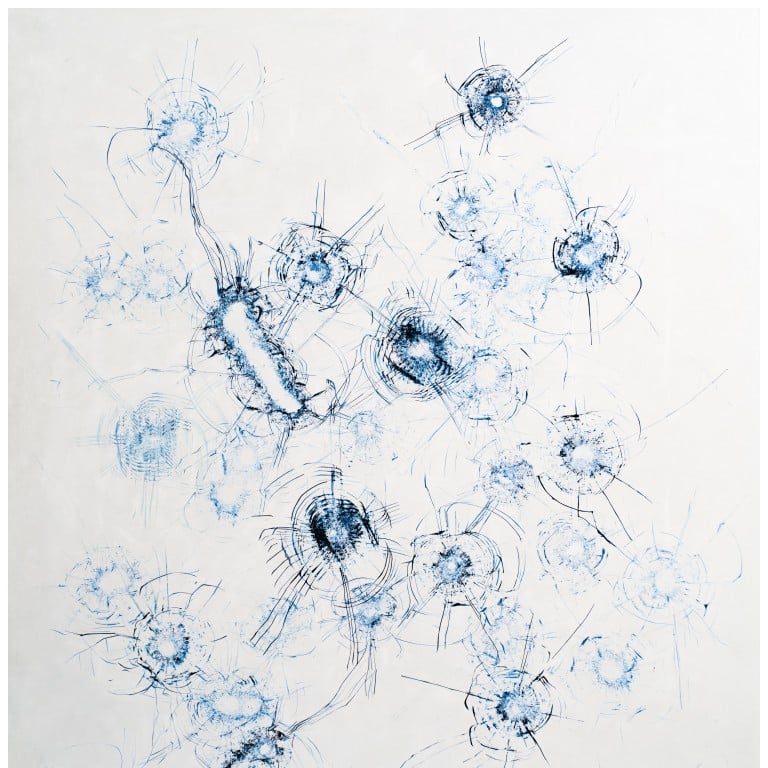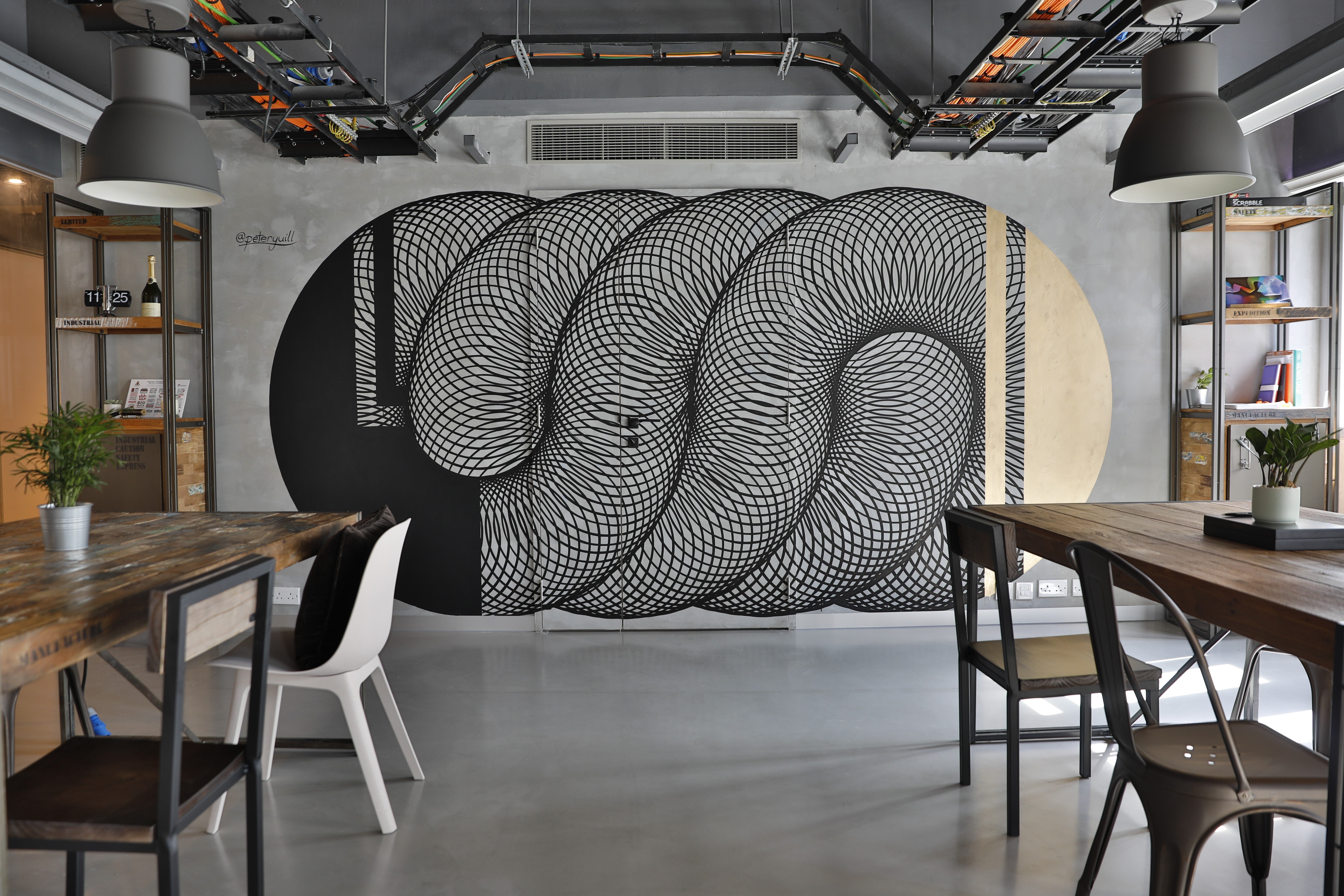Art Basel Hong Kong: the dead cats and bullet holes inspiring modern Chinese art

Chinese contemporary art’s depth and variety is being showcased at this year’s Art Basel. A highlight is Tang Contemporary Art, presenting a blend of classic and up-and-coming Chinese artists including Zhao Zhao, Sun Yuan and Peng Yu, Qin Qi and Huang Yongping.
Qin Qi came to prominence after his 2017 solo exhibition at Tang Contemporary Art, offering a diversity of styles inspired by travels to destinations such as Tibet and Southeast Asian countries, where the arts are often presented in vibrancy and exoticism, from paintings to sculpture. Altfield Gallery is one such space exhibiting a selection of Southeast Asian 18th- and 19th-century Buddhist sculpture and carvings, with figures from Myanmar and Thailand.
Qin Qi makes exaggerated use of colour and illustrates minorities and political figures. An oil painting, Untitled, depicts the life of refugees in Myanmar’s Kokang region, a geopolitical hotspot bordering China.

Zhao is always full of surprises. His experiments with gunshots and glass are a stand-out, considering that China makes very few exceptions to the outlawing of gun ownership. The resulting series of oil paintings, titled Constellations, depicts the cracking patterns formed by bullet holes on shattered glass, speaking intriguingly to aesthetic and political motifs.
A new installation, Cat, part of his “In Extremis” series, was inspired by spotting traces of a dead cat’s body flattened into the asphalt by passing vehicles outside his studio.
Film is also a feature of the gallery’s work. Yuan Gong’s video, Scented Air • The Stroll, shows the artist carrying fog-making devices outside prominent locations, including Prague Contemporary Art Festival, Berlin’s Reichstag building and Milan railway station. This attracts attention, making the statement that performance art is alive and well.
“The 5th Collectors’ Contemporary Collaboration” is on at the Hong Kong Arts Centre (HKAC). If Tang Contemporary is more “now”, this mix of distinctive collections and Chinese contemporary art archives helps audiences understand the art scene’s development over the years.

The HKAC is presenting the collections of three renowned collectors – Guan Yi, Lu Xun and Zheng Hao – and includes archives from leading scholars and curators Fei Dawei and Gao Minglu in an exhibition detailing great Chinese art milestones since Deng Xiaoping opened the country up in the late 1970s.
“This exhibition outlines contemporary art in China from three different collectors’ aspects through works and archives. Due to China’s vast size, the art scene in different regions largely varies from each other and this fifth edition focuses primarily on private collections in the eastern and coastal areas, to review the history of leading cities,” says curator Ling Min, associate professor of art history at Shanghai Academy of Fine Arts, Shanghai University.
Each collector offers a distinctive experience, showing the arts scene’s evolution from the 1970s.
Guan Yi presents Today No Water 1/5 (1985) [2005 edition], a large-character poster created by Wu Shanzhuan, along with Zhong Ming’s art piece He is Himself – Sartre (1980). The latter stirred controversy in the art scene on its release, as it diverged from the normal depictions of Chinese art from the revolution to the 1970s: Chairman Mao, workers, peasants and soldiers.
Lu Xun introduces architectural work surrounding the stunning Nanjing Sifang Art Museum. A highlight is photo work detailing Movement Field (2016) by Xu Zhen, which daringly details famous protest marches, defying the political milieu in which it is set. Your Future’s Bleak, You’re So Last Week (2014) by Hong Kong artist Lee Kit, has imagery evoking turmoil in political, cultural and economic environments.
Lastly, Zheng Hao has selected works by German conceptual artist Joseph Beuys whose work is being presented at the Hong Kong Arts Centre for the first time, and includes White Rabbit (1979) and We Are the Revolution (1972).
Want more stories like this? Sign up here. Follow STYLE on Facebook, Instagram and Twitter

- Sought-after Chinese artists like Zhao Zhao, Sun Yuan and Peng Yu, Qin Qi and Huang Yongping are in the spotlight at this year’s fair


